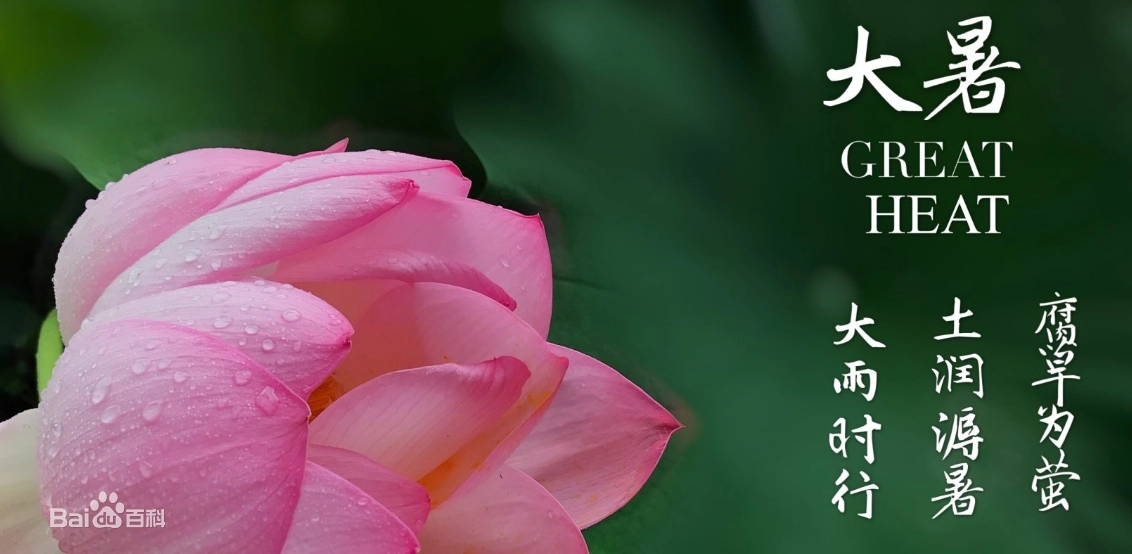Tjor Heat is the twelfth solar term among the traditional 24 solar terms in China, and also the last solar term of summer.
During Major Heat, most parts of China enter the hottest season of the year.
Like Minor Heat, many natural calamities such as floods, droughts and typhoons also happen during Major Heat. Therefore, it’s important to harvest and plant in time to avoid setbacks caused by natural disasters.
China has a typical monsoon climate and is controlled by Atmospheric circulation systems such as the Horse latitudes. From the middle of June to the first and middle of July, the main rain belt in eastern China generally moves northward from South China and Jiangnan to the Jianghuai region. Entering late July (the “seventh and eighth periods”), it is equivalent to the period from the beginning of the summer to the beginning of autumn. With the seasonal northward uplift of the subtropical high circulation system, the southwest monsoon will also advance northward. The southwest wind outside the subtropical high will transport warm and humid airflow from the tropics and subtropics to the northern region, which intersects with cold air in the middle latitudes in North China and Northeast China, and the rainy season begins in North China and Northeast China. The northwest region, due to its deep inland location and distance from the ocean, is the arid region with the lowest annual precipitation in China.
Traditional custom
1. Sending “Summer Boats” in Zhejiang Province
Sending the “Great Summer Boat” is a traditional folk custom in the coastal areas of Zhejiang, especially in many fishing villages in Taizhou. Its significance is to send the “Five Saints” to the sea and protect the safety of the people during the summer. When delivering the “Great Summer Boat”, there are rich and colorful folk art performances.
2. Suncured ginger
Fujiang originates from Shanxi, Henan, and other regions in China. During the three summer seasons, people would slice or extract ginger and mix it with brown sugar. They would then put it in a container covered with gauze and let it dry in the sun. After full fusion, it has a miraculous effect on aging, cold stomach, cold and cough, and has a warm and healthy effect.
3. Drinking Fucha
Fucha, as the name suggests, is tea that is consumed during the three dog days. The free supply of Fu tea usually lasts from the beginning of June to the end of August in the lunar calendar. This kind of tea is made of more than ten Chinese herbal medicines, such as honeysuckle, Prunella vulgaris vulgaris and liquorice. It has the function of cooling and relieving the heat.
4. Burn Fu Xiang
Fuxiang has the highest temperature during the hot summer season, with the fastest growth of crops. Drought, waterlogging, and wind disasters are also most frequent in most areas, making it a heavy task to rush for harvest and planting, combat drought, flood, typhoon, and field management; Therefore, the people burn incense and pray for good weather and abundant grains; There is also a saying that is similar to traditional Chinese medicine moxibustion, which uses fragrant herbs to roast specific acupoints during the hot weather and can treat various stubborn diseases.
In addition, Taiwan, China, China, eats pineapples during the summer heat, North China has the custom of drinking summer sheep (that is, eating mutton soup) on the day of the summer heat, and people in many regions have the custom of Cricket fighting for fun after tea.
Post time: Jul-23-2023

